How AI and IoT Are Rewriting the Rules of Business
Updated: June 11, 2024
AI and IoT are the two most disruptive and broadly impactful technologies, which perfectly complement each other. Without data, artificial intelligence (AI) would have been worthless. Fortunately, there is no shortage of generated data – 118 zettabytes of data were created in 2023, according to Statista. By 2025, this number will increase to 180 zettabytes, with almost 80 zettabytes attributed to the Internet of Things (IoT). While each of these technologies is groundbreaking in its own way, together, AI and IoT duet is highly symbiotic and beneficial.
Companies begin to realize that investment in AI development services for their IoT projects lets them tap into IoT’s full potential and reap the benefits of greater insights. AI for IoT exceeds standard business intelligence solutions in analyzing data. So, it’s no wonder the percentage of IoT projects that use AI will increase from 10% in 2017, according to Gartner, to 47% by 2027. To illustrate the potential, we’ll look at the various advantages of AI and IoT, review how exactly their passes are crossing, and examine some of the use cases.

We provide companies with senior tech talent and product development expertise to build world-class software. Let's talk about how we can help you.
Contact usTable of Contents
AI and IoT: Overview
Undoubtedly, artificial intelligence is currently the most trending topic, both in tech and business circles. Its primary goal is to create smart machines that mimic human brain function so that they can behave, work, and learn like people. AI-enabled systems can think, solve problems, adapt to new situations, and do all that without human intervention.
IoT is another far-reaching development that connects digital devices and sensors to a central network. The IoT connectivity technology allows all linked devices to communicate, gather data, and act on it.
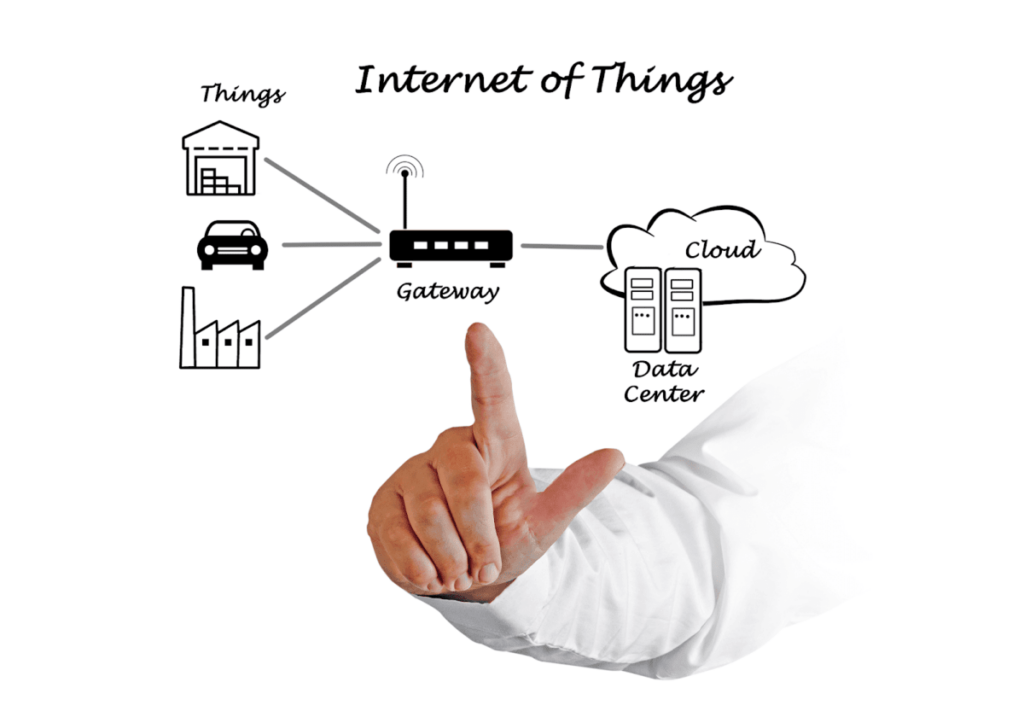
A control loop, also called the workflow, is the component of IoT responsible for triggering reactions to incoming data. Certain control loops use simple rules to respond, such as a sensor activating lights upon detection. However, other scenarios, like turning lights on upon detection if it’s dark, require a more complicated set of rules and AI to perform analysis and respond quickly. That’s why we’ve come to the need for IoT and AI collaboration and witness the next step of their evolution – AIoT.
In our recent article, you can find more information on How to control IoT devices.
What is AIoT?
So, as you could have guessed, AIoT (Artificial Intelligence of Things) is a blend of AI and IoT. It combines the power of AI technology to simulate human intelligence and IoT’s connected infrastructure to build autonomous systems. Instead of simply collecting information, AIoT allows analyzing and understanding this data.
You can think of artificial intelligence as the brain of the system, while the Internet of Things devices are the eyes and ears. It’s a powerful partnership that tremendously improves data analytics, user interactions, and IoT operations we never thought possible.
How Does AIoT Work?
AI enhances IoT with its machine learning capabilities and decision-making, whereas IoT enriches AI through data sharing, communication, and network connectivity. Consequently, AIoT needs the integration of intelligent devices, software solutions, and platforms to operate without effort from the end user. Here’s how it happens:
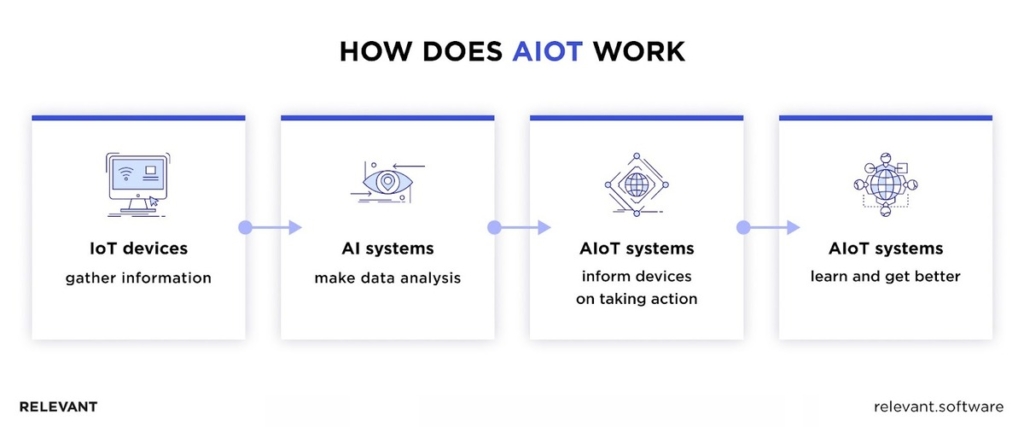
- Gathering information. First, IoT devices, like your smartwatch or home thermostat, collect data from their surroundings.
- Making sense of data. AI systems examine the collected data to find patterns or important information and understand the context of the requests received from the real world.
- Taking action. Based on what the AIoT learns, it makes decisions and tells devices what to do. For example, if your smart thermostat notices you’re always cold in the evening, it might decide to turn up the heat just before you get home.
- Learning and getting better. The more data the AIoT-powered devices receive, the smarter they get. Over time, they learn from their decisions and user interactions, becoming even better at helping you.
So, the true connection between AI and IoT happens when artificial intelligence trains IoT devices to better recognize and respond to the data and requests they get.
The Benefits of AI and IoT Integration
The IBM Institute conducted interviews with C-suite executives, 19% of whom prioritize AI and IoT integration for gaining more advantages it offers their businesses. So, what are the benefits company leaders may expect to reap by combining these two technologies?
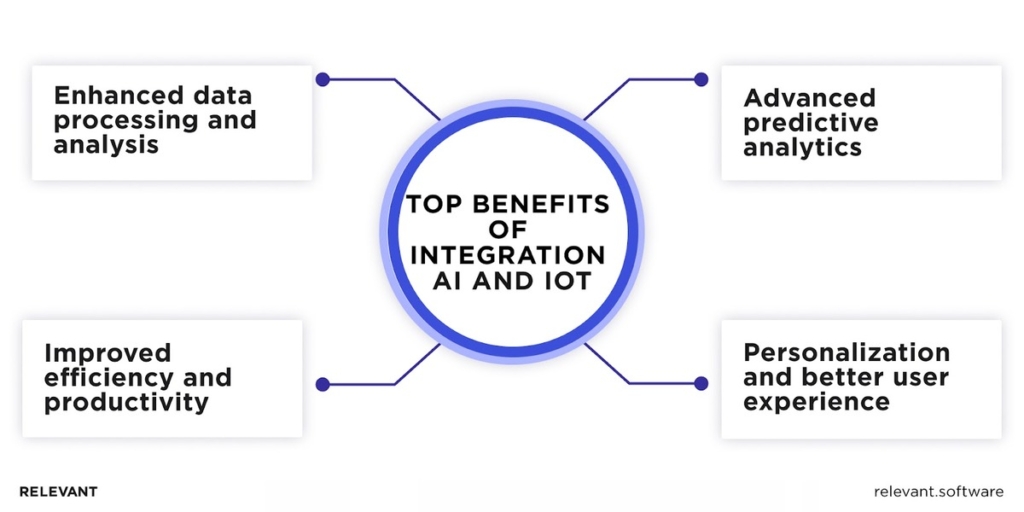
Enhanced Data Processing and Analysis
IoT devices are constantly gathering mountains of data. But here’s the catch: having data is one thing; making sense of it quickly and efficiently is another. AIoT systems can handle the sheer volume generated by IoT devices with ease, utilizing advanced algorithms to sift through terabytes of information.
Speed is key in this digital age, and analytics AI solutions enable it. A network of AIoT sensors installed across the city can analyze up-to-the-minute traffic patterns and accidents to optimize flow and prevent congestion. As the information can be processed once it’s received, IoT solutions can respond faster to events and inputs, which is an absolute differentiator in areas like supply chain optimization or quality control. All this is possible now thanks to the AI-IoT partnership.
Improved Efficiency and Productivity
Let’s talk about automation first. Those repetitive and time-consuming tasks that eat into valuable work hours are prime candidates for this transformation. IoT architecture powered by AI will free up human talent to focus on more strategic and creative endeavors. Robots sorting inventory, guided by AI analyzing real-time stock levels or self-driving delivery vehicles, choosing routes optimized by AI algorithms is operational efficiency at its best.
Also, AIoT can find ways to make operations more efficient. This could mean adjusting energy use in real-time in a smart building to cut costs or optimizing logistics routes in a supply chain to deliver products faster and reduce emissions. In every case, the AI and IoT duo is tirelessly working behind the scenes to ensure that every aspect of the operation is running as efficiently as possible.
Advanced Predictive Maintenance
Unexpected downtime due to equipment failure is very costly. Fortunately, the integration of IoT, AI, machine learning can fix this issue, helping you switch to predictive maintenance. Sensors embedded in equipment collect data on performance and certain metrics, feeding this information into AI systems trained to detect anomalies and predict potential failures. So, while IoT performs machine condition monitoring, AI understands when maintenance is needed and schedules repairs at the optimal time by itself.
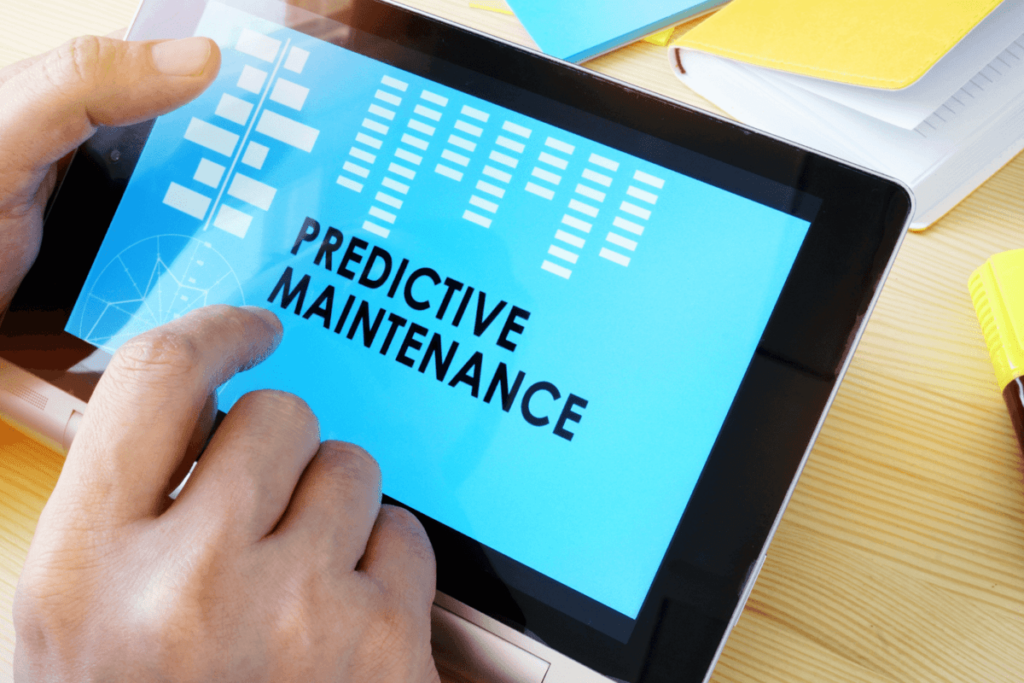
The benefits of this IoT and AI fusion are profound. In addition to lowering the chances of unplanned downtime, AIoT extends the lifespan of heavy machinery and optimizes the use of maintenance resources. Companies can plan and allocate resources better and avoid the ripple effects of downtime on their operations, supply chain, and customer satisfaction.
In some sectors, like energy, that heavily rely on equipment reliability, the stakes couldn’t be higher. Advanced predictive maintenance and relevant energy software solutions driven by AIoT can help avoid disruptions and reduce maintenance costs by 5-10%, as Deloitte found.
Personalization and Better User Experience
Amazon.com has earned the reputation as the most customer-centric business as it puts a lot of effort into AI software development and personalizing customer experience. The e-commerce giant is well-known for using AI to power its product recommendation engines. But the company also uses the smart speaker Alexa (IoT device) to learn about user’s preferences and offer customized experiences as well as targeted ads. The AI and IoT match improves customer satisfaction by learning from their interactions and even their schedules to offer suggestions and make adjustments that truly make life easier and more enjoyable.
Here’s a simple step-by-step guide on How to create an AI system that can help you test the waters.
Transforming Industries with AI and IoT
While a lot of AI in IoT applications is about putting smart tech in household gadgets, here are some examples of how AIoT is used in broader ways in different sectors.
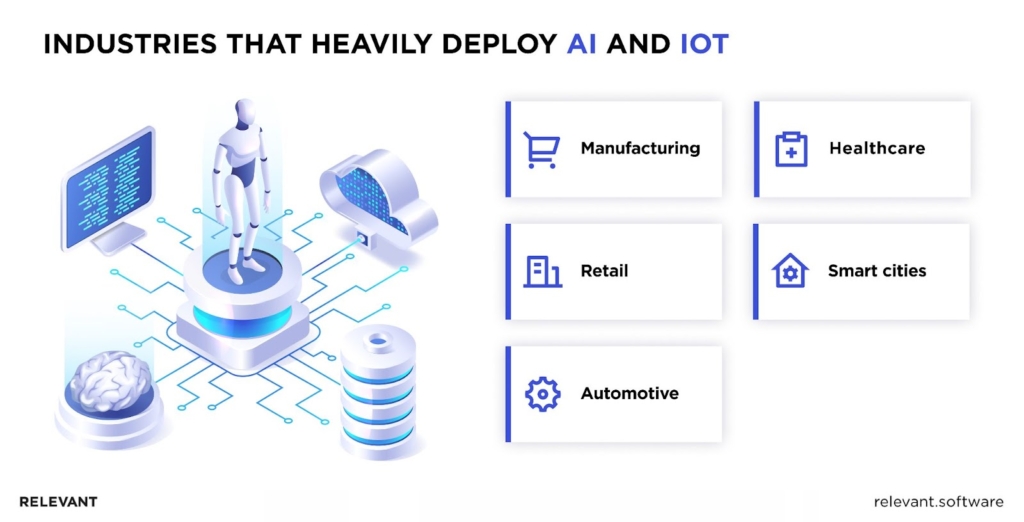
Manufacturing
Manufacturing has long relied on IoT, AI, deep learning, robotics, and other technologies to speed up its processes. For instance, a chocolate smart factory uses Siemens’ AI solutions to monitor humidity, temperature, and machinery to quickly fix anomalies using IoT systems with deep learning models. Such a merge of AI and IoT, transparent data storage, mobile applications, and real-time analytics creates hardware independence for smart factories. So, manufacturers can save time and costs while improving operational efficiency and worker safety.
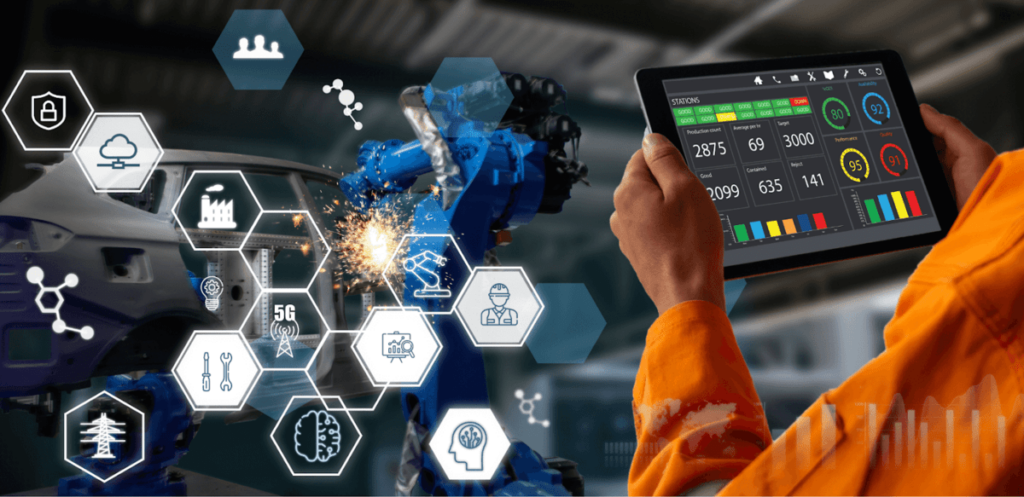
Healthcare
The primary goals of future healthcare are digital health monitoring and prevention. Today, physicians can use IoT in healthcare medical devices and wearables to monitor people’s health conditions even if they do not live in the same country or place. Keeping track of a patient’s health history makes AI and IoT-assisted systems extremely useful.
In addition to remote patient monitoring and telemedicine, the disruptive IoT and artificial intelligence duo help doctors improve diagnostics accuracy and detect potential health issues early on. There are already numerous cases when AI systems trained on scans detect cancer better than radiologists, for the most part. And most importantly, AIoT can predict the likelihood of getting a disease or its progression based on patient records and information from wearables.
Retail
Many retail outlets now feature advanced camera systems that employ computer vision and facial recognition technology to identify customers as they walk in. Using artificial intelligence, the systems classify different characteristics of each visitor so business owners can inform future decisions regarding operations and marketing. AI and IoT can collect key details about consumer behavior (age, gender, product preferences, and more) and help decision-makers improve shopping experiences and create ads targeting certain demographic groups. Amazon Go retail stores are a true exploit of IoT, artificial intelligence, and touchless technologies.
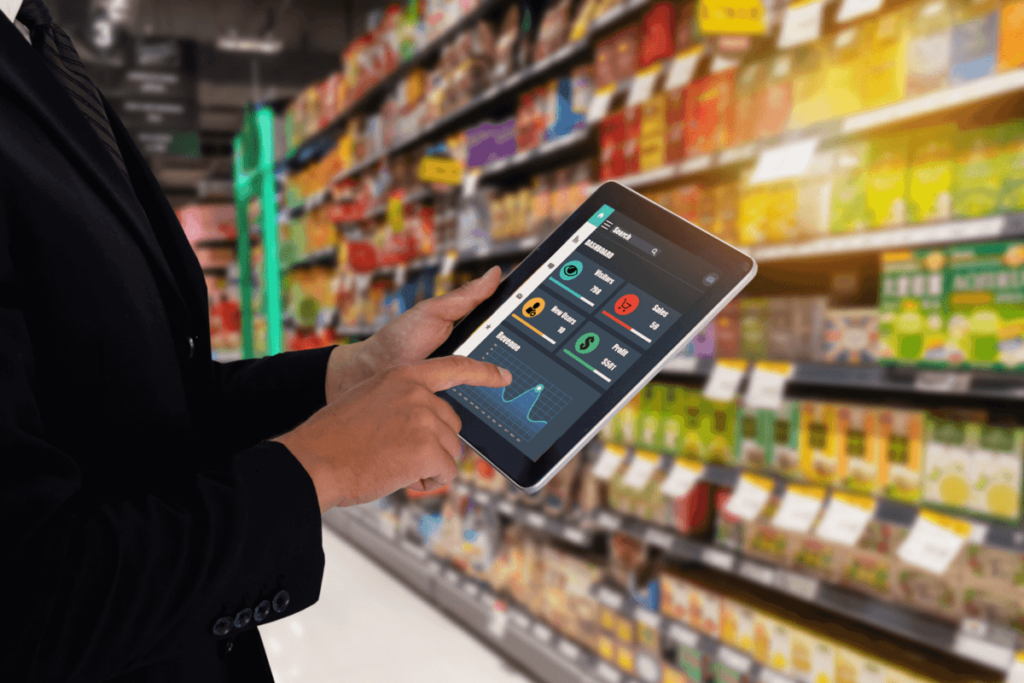
Supply chain management and logistics are back-office operations of retail stores that can also see tremendous improvements thanks to the fusion of AI and IoT. Visibility and transparency of the goods and materials movements help entrepreneurs anticipate supply chain disruptions and maintain a consistent flow of products based on demands the same AIoT system can predict.
Smart Cities
Smart cities have the biggest potential to benefit from AI and IoT integration. Sensors, meters, lights, and other smart technologies can make cities safer and more sustainable while improving the citizens’ quality of life. Here are just a few areas that city authorities, in collaboration with companies, can boost with the help of AIoT systems and ML processing:
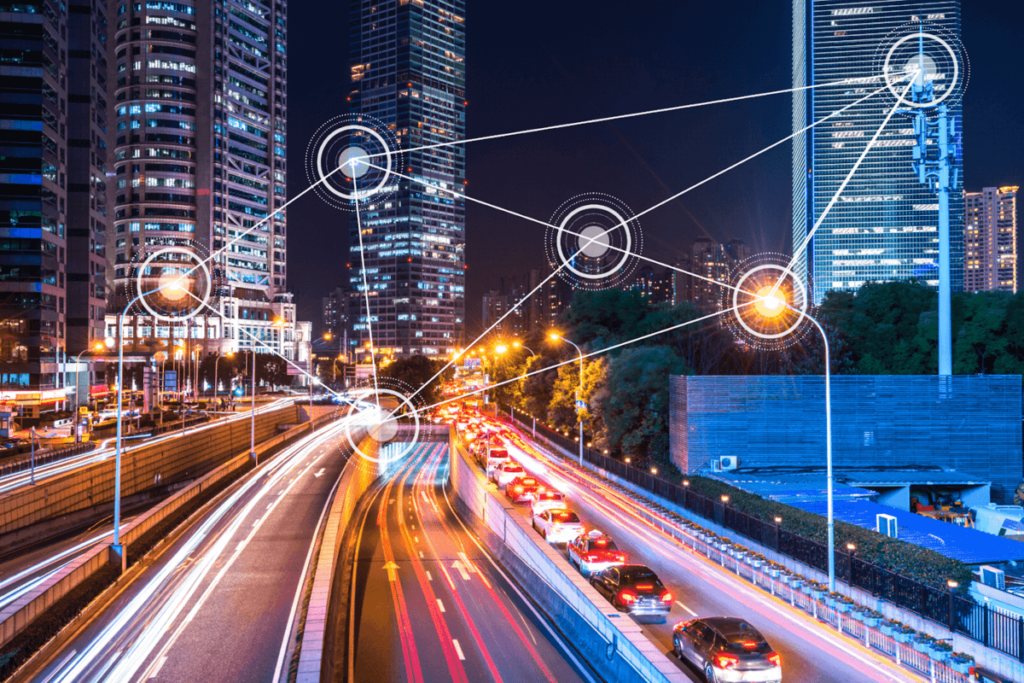
- Traffic management. Optimize signal timings and reduce congestion for smoother commutes.
- Public transportation. Provide demand-responsive services for a more efficient and user-friendly system.
- Waste management. Optimize collection routes and predict waste levels for a cleaner city.
- Energy conservation. Smart grids and IoT devices adjust energy use based on actual needs, which helps reduce environmental impact.
- Improved urban living. From smart parking to environmental monitoring, IoT and AI enhance daily life and make cities more livable and responsive to resident needs.
- Enhanced public safety. AI-powered emergency response systems can predict and quickly react to accidents or crime events.
- Urban planning. Data-driven insights inform infrastructure development and resource allocation for more sustainable urban planning.
Automotive
The automotive sector uses a range of AI and IoT applications for maintenance and assembly to guarantee the safety of its vehicles. Manufacturers can now predict potential vehicle part failures due to AI analyzing diverse data sets from workshops, safety agencies, and more, identifying which components may require replacement or maintenance. It increases customer trust and loyalty.
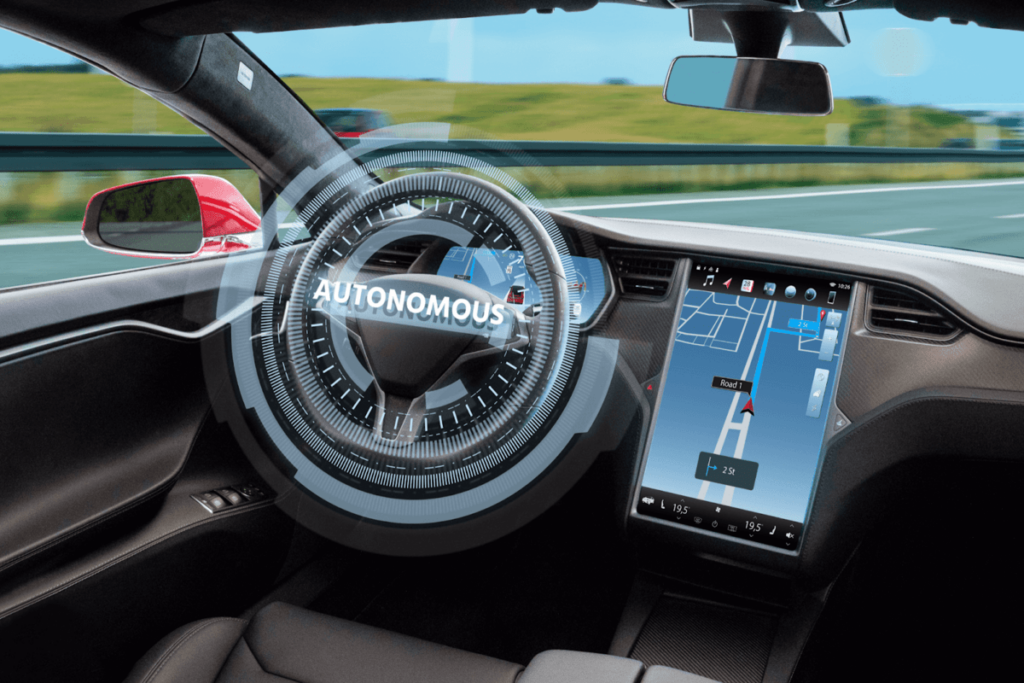
But probably the most exciting and promising use of IoT with AI is self-driving vehicles. Receiving information from multiple sensors and cameras, these cars monitor driving conditions, interpret the behavior of drivers and pedestrians, and calculate the optimal speed for safety and efficiency.
AI and IoT: Bottomline
AI and IoT will grow quickly and soon dominate tech business solutions. AIoT integration projects require a decent infrastructure capable of handling data-heavy tasks and real-time analytics. This is precisely where a seasoned AI/ML solution provider, such as Relevant Software, becomes a game-changer for your initiatives.
Our team of AI engineers and IoT experts can create the necessary infrastructure tailored to various AIoT applications. We also help you formulate a strategy and design an IoT network with AI for superior data analysis. We support you at every phase to make sure the integration process is smooth and without a hitch.
Our core services:
Do you want a price estimate for your project?
Do you know that we helped 200+ companies build web/mobile apps and scale dev teams?
Let's talk about your engineering needs.
Write to us











